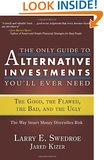
Lifecycle Investing
and over one million other books are available for Amazon Kindle. Learn more


Flip to back
Flip to front

Lifecycle Investing: A New, Safe, and Audacious Way to Improve the Performance of Your Retirement Portfolio Hardcover – May 4, 2010
See all 10 formats and editions
Hide other formats and editions
| Amazon Price | New from | Used from |
|
Paperback, Large Print
"Please retry"
|
—
|
— | — |
|
Audible, Unabridged
"Please retry"
|
or Free with Audible 30-day free trial | ||
|
MP3 CD, Bargain Price
"Please retry"
|
$7.89 | $7.99 |
Best Books of the Year So Far
Looking for something great to read? Browse our editors' picks for 2015's Best Books of the Year So Far in fiction, nonfiction, mysteries, children's books, and much more.
Customers Who Bought This Item Also Bought
Page 1 of 1 Start overPage 1 of 1
Editorial Reviews
Review
Robert Shiller, author of Irrational Exuberance
" A most provocative book. The real advantages of time diversification have never been laid out so clearly or with such a program of action."
Tim HarfordFinancial Times
"Here are the chief investment lessons of the financial crisis for today’s young people: they should be buying more shares and running up debts to do so. . . . [T]here is nothing intrinsically risky about regular borrowing to get that fund off to an early start. . . . Not only does the concept make sense, it has paid off in the past. . . . Ayres and Nalebuff have looked at historical stock market data. . . . For every single cohort, the early leverage strategy beat the conventional wisdom."
Moshe A. Milevsky, Ph.D., Finance Professor, York University, and author ofAre You a Stock or a Bond?
“This bold book promotes more early equity exposure for the masses, precisely at a time when many practitioners are re-thinking the ‘buy and hold stocks for the long run’ mantra. Whether you are comfortable with this strategy or not, the book is a must read for anyone who claims to think about their personal finances in a rigorous and logical manner.”
" A most provocative book. The real advantages of time diversification have never been laid out so clearly or with such a program of action."
Tim HarfordFinancial Times
"Here are the chief investment lessons of the financial crisis for today’s young people: they should be buying more shares and running up debts to do so. . . . [T]here is nothing intrinsically risky about regular borrowing to get that fund off to an early start. . . . Not only does the concept make sense, it has paid off in the past. . . . Ayres and Nalebuff have looked at historical stock market data. . . . For every single cohort, the early leverage strategy beat the conventional wisdom."
Moshe A. Milevsky, Ph.D., Finance Professor, York University, and author ofAre You a Stock or a Bond?
“This bold book promotes more early equity exposure for the masses, precisely at a time when many practitioners are re-thinking the ‘buy and hold stocks for the long run’ mantra. Whether you are comfortable with this strategy or not, the book is a must read for anyone who claims to think about their personal finances in a rigorous and logical manner.”
About the Author
Ian Ayres is an economist, a lawyer, and the William K. Townsend Professor at Yale Law School. He has written for the New York Times, Wall Street Journal, Financial Times, Slate, and The New Republic, and his research has been featured on PrimeTime Live, Oprah, and Good Morning America. He is the author of ten books, including the bestseller Super Crunchers. A graduate of Yale and MIT, he was recently elected to the American Academy of Arts and Sciences. He lives in New Haven, Connecticut.
Barry Nalebuff is the Milton Steinbach Professor of Economics and Management at Yale School of Management. He is the author of fifty scholarly articles and multiple books—including Co-opetition and The Art of Strategy—and is the cofounder of Honest Tea. A graduate of MIT and a Rhodes Scholar, he earned his doctorate at Oxford University. He lives in New Haven, Connecticut.
Barry Nalebuff is the Milton Steinbach Professor of Economics and Management at Yale School of Management. He is the author of fifty scholarly articles and multiple books—including Co-opetition and The Art of Strategy—and is the cofounder of Honest Tea. A graduate of MIT and a Rhodes Scholar, he earned his doctorate at Oxford University. He lives in New Haven, Connecticut.
NO_CONTENT_IN_FEATURE
Start reading Lifecycle Investing on your Kindle in under a minute.
Don't have a Kindle? Get your Kindle here, or download a FREE Kindle Reading App.
Don't have a Kindle? Get your Kindle here, or download a FREE Kindle Reading App.
Best Books of the Month
Want to know our Editors' picks for the best books of the month? Browse Best Books of the Month, featuring our favorite new books in more than a dozen categories.
Want to know our Editors' picks for the best books of the month? Browse Best Books of the Month, featuring our favorite new books in more than a dozen categories.
Product Details
Would you like to update product info or give feedback on images?
|













